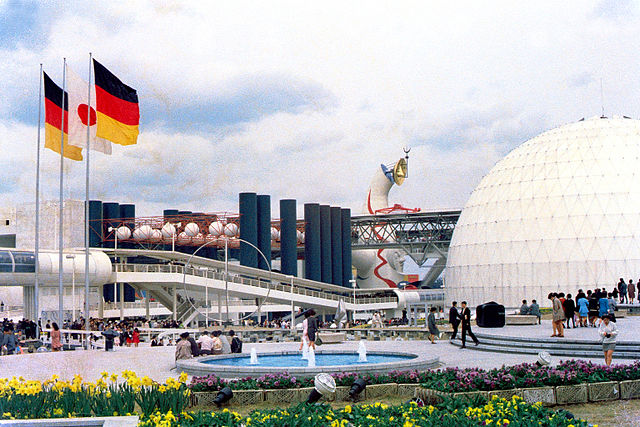Top Qs
Timeline
Chat
Perspective
Fritz Bornemann
German architect (1912–2007) From Wikipedia, the free encyclopedia
Remove ads
Fritz Bornemann (12 February 1912 in Berlin – 28 May 2007 in Berlin) was a German architect.


Life and works
Summarize
Perspective
Bornemann studied architecture at the Technische Hochschule in Charlottenburg (now Technische Universität Berlin). After graduating in 1936, he was Assistant Scenic Designer at the Berlin Municipal Opera and, starting in 1945, Construction Supervisor with the city of Berlin. Since 1950 he became an independent architect active in Berlin. The designs for the Amerika-Gedenkbibliothek (America Commemoration Library) (1951–1955), the Deutsche Oper Berlin (1956–1961), the Freie Volksbühne (1961–1963) and the Museumszentrum Berlin-Dahlem (1966–1970) were drawn up by him. He also designed the headquarters of the Commerzbank Berlin (1969–1974).

He designed the German Pavilion for the 1970 World's Fair in Osaka (Japan). With this building Bornemann decisively renounced the large architectonic gesture by burying the exhibition area below ground; a spherical auditorium served for multimedia presentations of current trends in electronic music.

Later there appeared, amongst others, the extension of the Rathaus of Berlin-Wedding and the University Library in Bonn. He never built residential houses.
Less well known is his work in multimedia. He designed some exhibitions, amongst them Atom (1953) and Farmer Smith (1957). The Osaka Pavilion was his crowning achievement in this field.
Bornemann's architecture was and is a subject of violent controversial opinions over the modern trends of the 1950s and 1960s. The critics speak of "cold" or "austere" architecture and belittle his buildings with expressions like "elegance in exposed-aggregate concrete." His adherents see in his work a model for modern architecture, and especially for modern theatre architecture.
For more than 16 years Fritz Bornemann was chairman of the Bund Deutscher Architekten (Association of German Architects).
Remove ads
Competitions
- Imperial Palace in Addis Ababa, Ethiopia, 3rd Prize (1948)
- Municipal Theater of Gelsenkirchen, 2nd Prize (1953)
- Municipal Theater of Bonn, 2nd Prize (1960)
- Hanover Playhouse (1964)
Awards
- Honorary membership in the Association of German Architects
Sources
- Schindler, Susanne (ed.): Inszenierte Moderne. Zur Architektur von Fritz Bornemann. Berlin: Jovis Verlag. ISBN 3-936314-03-9
- Sigel, Paul. 2000. "Der deutsche Beitrag auf der Expo70 in Osaka." Arch plus no. 149–150 (April): 116–33. Reprinted online Thema 5, no. 1 (July 2000)
External links
- Fritz Bornemann in the German National Library catalogue
- https://web.archive.org/web/20051126143811/http://www.tu-berlin.de/presse/pi/2003/pi98.htm
- http://www.spiegel.de/kultur/gesellschaft/0,1518,485512,00.html
- Fritz Bornemann at archINFORM
- https://web.archive.org/web/20070927041247/http://www.reffert.de/architekten/bornemann.html
Wikiwand - on
Seamless Wikipedia browsing. On steroids.
Remove ads
